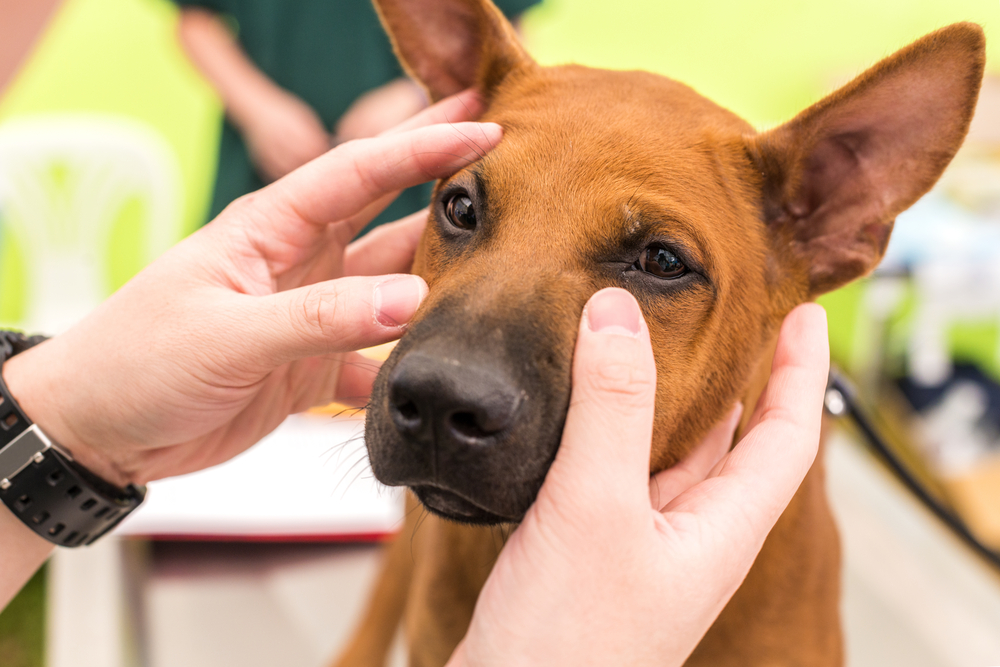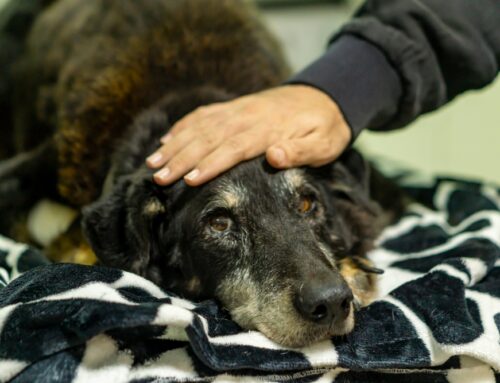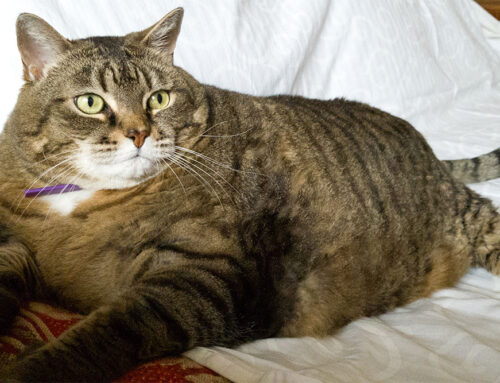When to Worry About Your Pet’s Eyes: Recognizing Urgent Eye Problems
Redness, discharge, or squinting can quickly turn into emergencies when it comes to eye health. From scratches and infections to glaucoma, prompt treatment is vital to prevent permanent vision loss. Paying attention to small changes helps protect your pet’s sight and comfort.
At Bayview Animal Hospital in coastal Florida, our team uses advanced diagnostic imaging and in-house testing to evaluate eye conditions quickly and accurately. Whether your pet needs immediate attention or routine monitoring, we’re committed to providing the thorough care your companion deserves.
How to Tell When Your Pet’s Eyes Are in Pain
Eye pain rarely announces itself with obvious symptoms. Instead, pets show discomfort through subtle behavioral changes that owners might initially dismiss as minor irritation.
Signs of eye pain include squinting, pawing at the face, excessive blinking, and reluctance to be in bright light. Some pets become lethargic or lose their appetite when dealing with significant ocular discomfort. Others may rub their face against furniture or carpeting in an attempt to relieve the sensation.
These behavioral changes often appear before visible redness, swelling, or discharge develops. By the time physical symptoms become obvious, the underlying condition may have already progressed. That’s why recognizing early signs and seeking prompt veterinary evaluation prevents worsening of these conditions and protects long-term vision.
Eye Conditions That Require Veterinary Attention
Understanding common eye problems helps you recognize when your pet needs professional care. Some conditions progress rapidly, while others develop gradually over time.
Scratches and Wounds on the Cornea
Corneal ulcers are open wounds on the clear surface of the eye caused by scratches, foreign material, or underlying disease. Cats often develop ulcers after scuffles with other animals, while dogs may injure their eyes on brush, grass, or household objects.
Symptoms include:
- Squinting and light sensitivity
- Excessive tearing
- Redness around the eye
- Visible cloudiness on the cornea
Treatment typically involves antibiotic drops, pain control, and sometimes protective e-collars to prevent further trauma. Without care, ulcers can deepen and potentially rupture the eye, causing permanent vision loss and potentially the need for surgery to remove the eye. Our diagnostic capabilities allow us to evaluate corneal injuries thoroughly and monitor healing progress.
Inflammation of the Eye’s Surface and Lids
Conjunctivitis occurs when the membrane lining the eyelids and white portion of the eye becomes inflamed. Allergies, environmental irritants, and infections all trigger this common condition. Some types of conjunctivitis are contagious- similar to Pink Eye in humans.
Signs include redness, swelling, and discharge that ranges from clear and watery to thick and yellow-green. The appearance and consistency of discharge often indicate whether the cause is allergic, viral, or bacterial.
Treatment depends on the underlying trigger. Bacterial infections require antibiotic drops, while allergic conjunctivitis responds to anti-inflammatory medications and environmental modifications. Our team can identify the cause and develop an appropriate treatment plan.
Prolapsed Gland of the Third Eyelid
Cherry eye appears as a red, swollen mass in the corner of the eye when the tear gland of the third eyelid prolapses from its normal position. This condition is most common in young dogs, particularly certain breeds with genetic predisposition like bulldogs, pugs, and other and flat-faced pets.
While cherry eye may look alarming, it causes irritation rather than immediate danger. However, leaving it untreated can lead to chronic dry eye since the prolapsed gland cannot produce tears effectively.
Treatment involves surgical repositioning of the gland rather than removal. Preserving the gland maintains normal tear production and protects long-term eye health.
Dangerous Pressure Buildup
Glaucoma occurs when fluid pressure inside the eye increases rapidly, damaging the optic nerve and causing severe pain. This condition represents a true emergency that can result in permanent blindness within hours.
Warning signs include:
- Sudden redness and cloudiness
- Enlarged or non-responsive pupil
- Visible eye swelling
- Behavioral changes indicating severe pain
Glaucoma requires immediate veterinary intervention. Our in-house diagnostic testing helps us evaluate eye pressure quickly and begin treatment without delay.
Cloudiness: Age-Related Changes vs. Vision Loss
Many owners notice their aging pet’s eyes developing a bluish haze and worry about blindness. Understanding the difference between cataracts and nuclear sclerosis helps determine whether treatment is necessary.
Nuclear sclerosis is a normal aging change where the lens becomes denser and develops a bluish tint. This condition causes minimal vision impairment and requires no treatment.
Cataracts, by contrast, create white or opaque areas within the lens that block light transmission and cause progressive blindness. They develop from multiple causes including age, diabetes, trauma, and genetics. Surgical removal may restore vision in appropriate candidates.
Our experienced team can differentiate between these conditions during routine examinations and recommend monitoring or referral as needed.
Insufficient Tear Production
Dry eye, or keratoconjunctivitis sicca, develops when tear glands cannot produce adequate moisture. Without proper lubrication, the cornea becomes inflamed and develops a dull, dry appearance.
Symptoms include sticky discharge, recurrent conjunctivitis, and progressive corneal damage. Treatment requires lifelong tear-stimulating medications, lubricating drops, and regular monitoring to prevent complications. In severe cases, surgery can reposition a salivary gland to help lubricate the eye.
Breed-Specific Vulnerabilities
Certain breeds face higher risks for inherited eye conditions that require lifelong management or surgical correction.
Hereditary eye disease includes progressive retinal atrophy, juvenile cataracts, and structural abnormalities affecting eyelids or drainage systems. German Shepherds and similar breeds commonly develop pannus, a chronic corneal inflammation requiring ongoing medication.
Entropion occurs when eyelids roll inward, causing lashes to rub against the cornea constantly. This painful condition typically requires surgical correction to prevent permanent scarring.
Brachycephalic breeds with flat faces have shallow eye sockets and prominent eyes that increase injury risk and dry eye susceptibility. These pets benefit from routine monitoring and protective measures during activities.
Lens dislocation represents a painful emergency where the lens shifts from its normal position, potentially causing glaucoma. Terrier breeds show genetic predisposition to this condition and require immediate veterinary attention when symptoms appear.
Recognizing True Eye Emergencies
Some eye problems demand immediate intervention to prevent permanent damage or vision loss.
Eye emergencies include penetrating injuries, chemical exposure, sudden severe swelling, or visible foreign objects. Coastal Florida pets occasionally encounter foxtails and other plant material that can lodge under eyelids, causing ulcerations or even penetrate the cornea.
Trauma from fights, accidents, or sharp objects can cause hidden internal damage even when external injuries appear minor. Warning signs include blood visible inside the eye, uneven pupil sizes, or sudden severe pain with light sensitivity.
If you notice these symptoms, contact us immediately for guidance and urgent evaluation.
When Vision Changes Suddenly
Rapid vision loss requires immediate assessment to determine whether the condition is reversible. Acute blindness in dogs can result from retinal detachment, optic nerve inflammation, or sudden pressure changes.
SARDS, or sudden acquired retinal degeneration syndrome, causes rapid, irreversible vision loss without obvious external changes to the eyes. This condition typically affects middle-aged dogs and develops over days to weeks.
Feline vision problems often relate to high blood pressure, which can cause retinal detachment and sudden blindness. Cats with kidney disease, hyperthyroidism, or heart conditions face increased risk.
Watch for subtle signs like bumping into furniture, hesitation on stairs, or reluctance to move in dim lighting. These behavioral changes may indicate progressive vision loss that warrants thorough examination.
Preventive Care and Home Monitoring
Regular wellness examinations catch eye problems in their earliest stages. Annual visits for younger pets and more frequent check-ups for seniors or high-risk breeds allow veterinarians to detect subtle changes before they progress.
At Bayview Animal Hospital, our advanced diagnostics including blood pressure monitoring and digital imaging help identify hidden diseases affecting eye health. For aging pets, we also offer laser therapy and specialized care for arthritis and age-related conditions that may impact mobility and quality of life.
Healthy eyes appear clear and bright with minimal discharge. At home, gently wipe away any debris with a damp cloth, avoiding harsh products that could cause irritation. If your pet requires eye medications, learning correct eye medication techniques ensures effective treatment and reduces stress. Desensitizing pets to gentle face handling through positive reinforcement makes future examinations and treatments easier for everyone involved.

Surgical Solutions When Necessary
Some eye conditions require surgical intervention to preserve vision and comfort. Modern procedures for cataracts, entropion, cherry eye, and trauma repair offer excellent outcomes when performed by experienced veterinarians.
Our surgical services include a wide variety of procedures performed with sophisticated medical technology. Post-operative care is critical for successful healing, and our team provides detailed instructions and follow-up monitoring.
Protecting Your Pet’s Sight for Life
Squinting, tearing, and redness are never minor symptoms when it comes to eye health. Early recognition and prompt veterinary care prevent permanent vision loss and protect your pet’s comfort and quality of life.
Understanding breed-specific risks, monitoring for behavioral changes, and committing to preventive care gives your pet the best chance for lifelong vision. At Bayview Animal Hospital, we’re committed to caring for pets the right way with thorough examinations and advanced diagnostics.
Request an appointment today if your pet shows any signs of eye discomfort or if you’d like to discuss preventive screening for breed-related conditions.







Leave A Comment